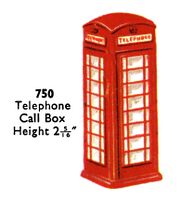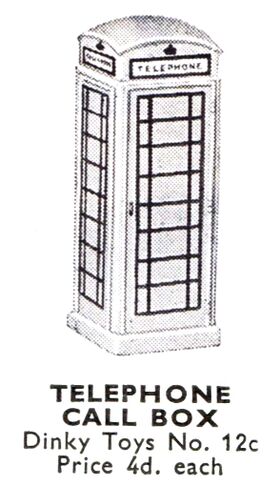Telephone Call Box (Dinky Toys 750)
| Exhibit |
|---|
Telephone Call Box (Dinky Toys 750) (i) (i)
|
 |
| location: |
|
Arch Two , Area 21 Classic Dinky Toys (John Durrant Collection) |
| Shelf 1
1954 - 1962 |
1936: Dinky 12c [image info]
A red and silver model telephone call box (Dinky Toys 750), made in 1954-62.
British telephone call boxes
The first public telephone boxes were introduced in 1920, but resistance to the K1's design led to a nationwide competition, judged by the Royal Fine Art Comission, to decide a new design for the telephone boxes. The design that was chosen came from Sir Giles Gilbert Scott, the architect who also happened to be responsible for the Liverpool Anglican Cathedral, Battersea Power Station, Waterloo Bridge and Bankside Power Station (now the site of the Tate Modern Art Gallery).
His 1926 design was the first appearance of the British telephone box in its iconic red form, but the K2 was unsuited to economic mass production, so a newer K3 came out in 1929 and was produced in large numbers. After a less successful K4 and 5, a cast iron K6 came in for 1936 and remained in production for a long time.
It was all downhill from there for the British telephone box. A ploy to modernise the telephone boxes led to another competition held in 1965; Bruce Martin's winning design was far more utilitarian, with none of the ornamental details or bulkiness. Then, later, came privatisation, and the majority of them were sold to be replaced with BT boxes. Despite decreasing demand since the rise of mobile phone usage, there are still 67,000 public call boxes remaining in the UK, 11,000 of which are the traditional red variety.



